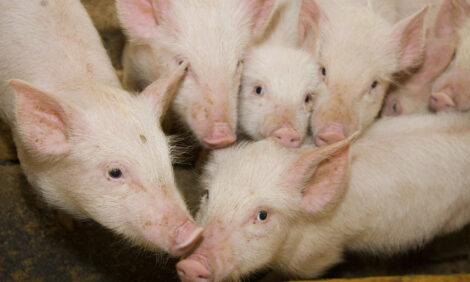Checkoff Analysis of USDA Price Data
US - A Checkoff-funded analysis of USDA price data shows fewer hogs sold through daily negotiated transactions (the spot market) during January 2004 than during previous years, although the prices of more than half the hogs in the United States still are determined by the spot market.
|
Need a Product or service?
|
|
The analysis, conducted by Pork Checkoff consultants, reviewed data from the USDA Mandatory Price Reporting system.
“The continued decline in the negotiated or spot market hogs increases the urgency for the industry to find another form of price discovery for most of the contracts,“ said Glenn Grimes, professor emeritus at the University of Missouri. “One possibility is to have mandatory price reporting of meat and tie the contracts to meat prices.“
Grimes is one of three economists who conducted the analysis. Grimes, Ron Plain, professor at the University of Missouri and Steve R. Meyer, president of Paragon Economics, are economics consultants for the Pork Checkoff.
The data that was reviewed came from reports that were created by the Livestock Mandatory Reporting Act of 1999, which went into effect in 2001. The reports cover all but the smallest harvest facilities. Total hog slaughter under Federal Inspection in January 2004 was 8,697,902 head. Data for 8,034,924 head (92.4 percent of federally inspected slaughter) are included in the mandatory price reporting system.
Annual studies since 1999 show the percent of hogs sold at negotiated prices has fallen from 35.8 percent for all of 1999 to 11.6 percent in January 2004. By adding the percentage of hogs purchased in the negotiated markets to the percentage purchased on hog or meat market formulas, the current study indicates that the price of at least 53 percent of the hogs in the United States was directly determined by the negotiated market.
“The true percent is higher because a high number of packer-owned and packer-sold hogs are priced with a market formula,“ Plain said.
More than a third of hogs were sold through a price-shifting arrangement, including 20.6 percent through other purchase arrangements and 7.2 percent on contracts tied to the futures market.
“About 27.8 percent of the hogs in January 2004 were bought under some system that supposedly reduces price risk to producers,“ Meyer said. “I suggest ‘supposedly’ because some of the pricing systems do not actually affect the variance of price received by the producers. Only cash contracts - the ones usually tied to futures - and contracts without ledgers reduce producers’ price risk. Other arrangements may or may not result in a realized average price that is different from the actual average negotiated price.“
The mandatory price reporting legislation required packers to report percent lean, carcass weight, base price and net price for each type of marketing arrangement. Data for January 2004 are in Table 2.
The negotiated hogs had the second lowest percent lean, the lightest average weight and the lowest net carcass price. The other market formula hogs had a percent lean close to the negotiated hogs and the highest average carcass weight.
“The other purchase arrangement hogs had the second highest net price,“ Meyer said. “This was probably due to the generally low price for hogs and higher feed prices during January 2004. This group of hogs will likely have the lowest average price for those months when the negotiated market price is higher or when feed prices are lower.“
Direct comparisons for all of the marketing arrangements cannot be made. The definitions for the marketing arrangements in the mandatory price reporting legislation are not the same as the definitions of arrangements reported by similar studies conducted by the University of Missouri and the National Pork Board prior to 2002. However, the spot market or negotiated groups are directly comparable across all time periods, so this very important portion is consistent with previous studies.
Source: National Pork Board - 5th March 2004

















